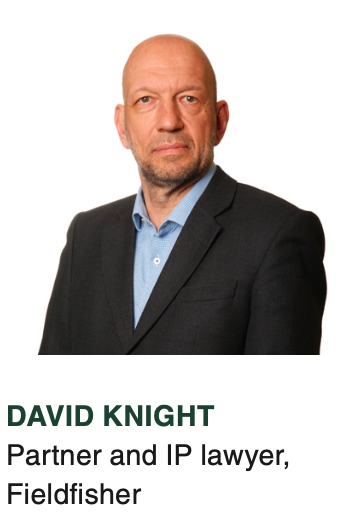Commercializing Cannabis and Patent Litigation
How the unfolding of notable infringement claim could alter commercial approaches for players in wider CBD treatment field.

As cannabis and its use moves out from ”behind the bike sheds” into greater use for legitimate medicinal and other purposes, its commercial potential has increased. And where there is commercial potential, intellectual property rights follow—or sometimes lead.
There has been a significant growth in patenting in and around cannabis, for example, in methods and apparatus to extract particular desired ingredients from the cannabis plant, or in relation to the use of cannabis or derivative products for the treatment of particular conditions.
For a while now there has been a concern in some quarters that some of the patents granted in this sector, particularly early ones, were granted with overly broad scope and therefore may hinder development of the market or can now be used as a vehicle to extract cash from successful businesses in the sector.
So far, however, there has been very little cannabis-related patent litigation—but that may be changing.
Just a few days before Christmas 2020, Canadian company Canopy Growth Corporation issued patent infringement proceedings against a UK company, GW Pharmaceuticals, in the U.S. District Court for the Western District of Texas. The patent, US patent 10,870,632, titled ”Process For Producing An Extract Containing Tetrahydrocannabinol and Cannabidiol From Cannabis Plant Material, and Cannabis Extracts,” had taken an extraordinary 19 years to progress through the application process at the United States Trade & Patent Office, and was granted on the same day the infringement claim was issued. One can speculate as to whether that delay reflects a real struggle to get the patent granted, or was a part of some sophisticated game-playing of the system by Canopy to delay the process, prolong the uncertainty for businesses in the sector and to allow sales to develop, thereby over many years building up a pot of potential damages against which Canopy now claim.
The patent will remain in force for just over one year. It would seem unlikely that a final judgment will be given in that time frame, so there is little prospect of GW’s activities in the US being injuncted should Canopy prevail. Nevertheless, for some years after the patent expires, Canopy will be able to bring patent infringement proceedings against, and seek damages from, those who before the expiry date infringed the patent in the US. The case, therefore, is not of concern just to GW Pharmaceuticals, but also to others who in the US use, or have used, the same extraction method.
Many patents granted by a patent office subsequently are held to be invalid and unenforcable by a different tribunal. It can be predicted with some confidence that GW Pharmaceuticals will seek to invalidate Canopy’s US patent, and, if successful, no doubt will be greatly appreciated by other businesses that might infringe the patent. Alternatively, if Canopy become concerned about GW’s claim for invalidity, it is quite possible that a confidential deal is struck in which GW withdraws the claim for invalidity and pays no or a much lower than demanded royalty to Canopy. Given the very high cost of patent litigation in the US, and the limited opportunities to recover those costs if one successfully defends a claim, it frequently happens that an accused infringer takes the view that it is more cost effective to pay out on an unmeritorious claim than to fight it. Were GW go down that route, the patent would remain in force, Canopy could bring their guns to bear on other infringers and repeat the process. For Canopy, picking up many small royalty payments in such compromise arrangements may be significantly more attractive than risking their patent by pushing for the maximum in royalty payments from one infringer.
That said, the possibility of obtaining full recompense from GW may prove particularly alluring for Canopy. According to Canopy, GW‘s sales of Epidiolex, the active ingredient of which is alleged to have been obtained by the patented process, were US$366million in the first nine months of 2020. Although Canopy’s infringement claim can only bear on GW’s activities in the US, based on just those activities, damages could run into many millions of dollars a year. However, Canopy also are alleging that GW were fully aware of Canopy’s patent application, and knowingly have infringed it. If Canopy are able to make good on this claim of willful infringement, the damages could be tripled.
GW, and others, may however have good grounds for considering the patent to be invalid. At the European Patent Office, the equivalent European patent was challenged in opposition proceedings by GW. At first GW were unsuccessful, but on appeal in 2012 GW prevailed and the European patent was revoked, thus liberating GW (and others) from any risk of infringing that patent in Europe.
The industry no doubt will watch the case with close interest, and will hope that the patent will be found invalid. However, a confidential settlement between Canopy and GW, would do nothing to alleviate the uncertainty Canopy’s patent poses to the wider industry.
David Knight is partner and IP lawyer at Fieldfisher
